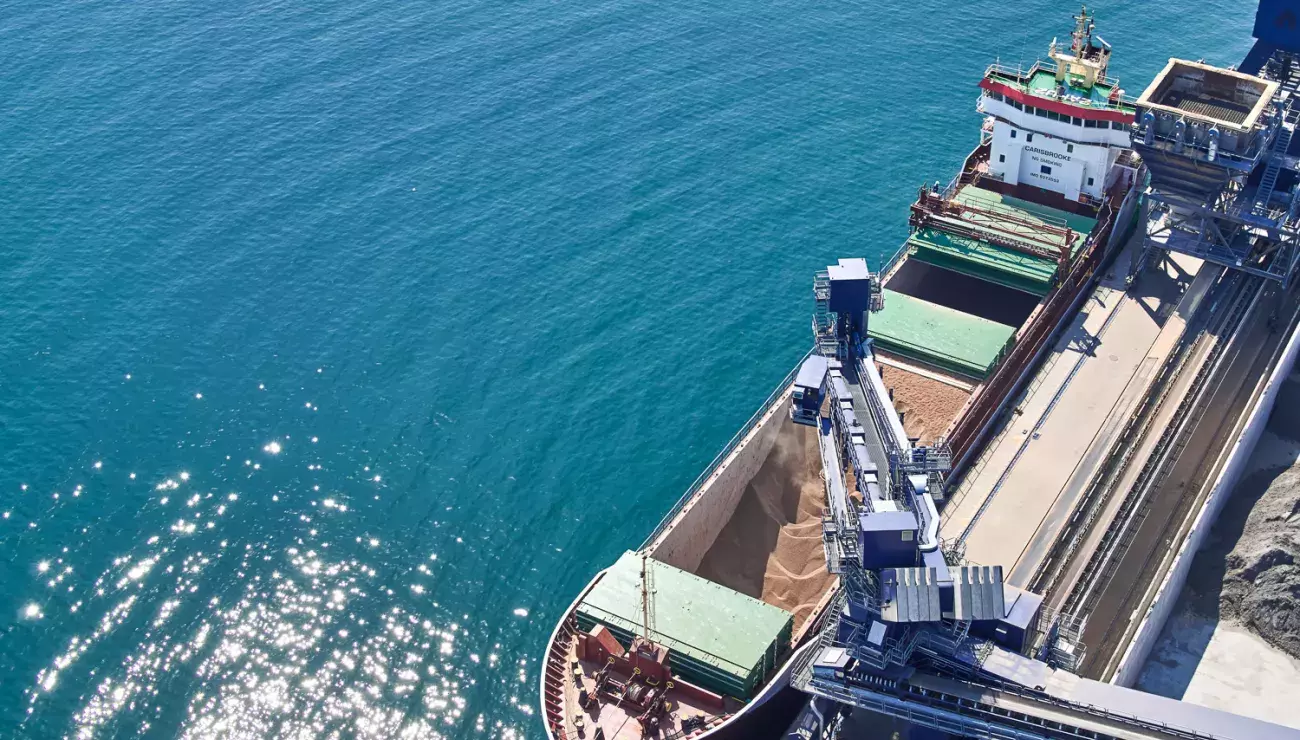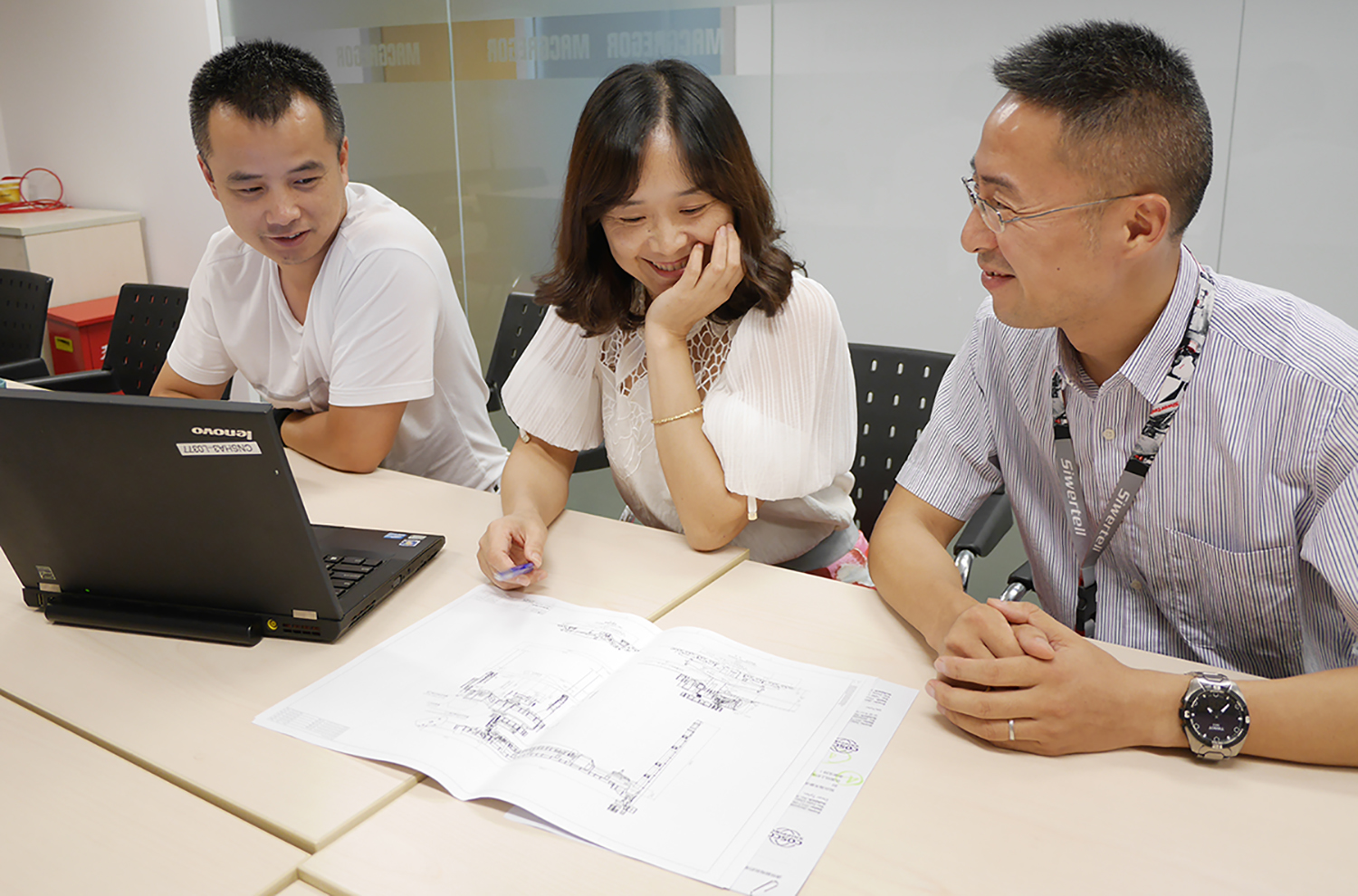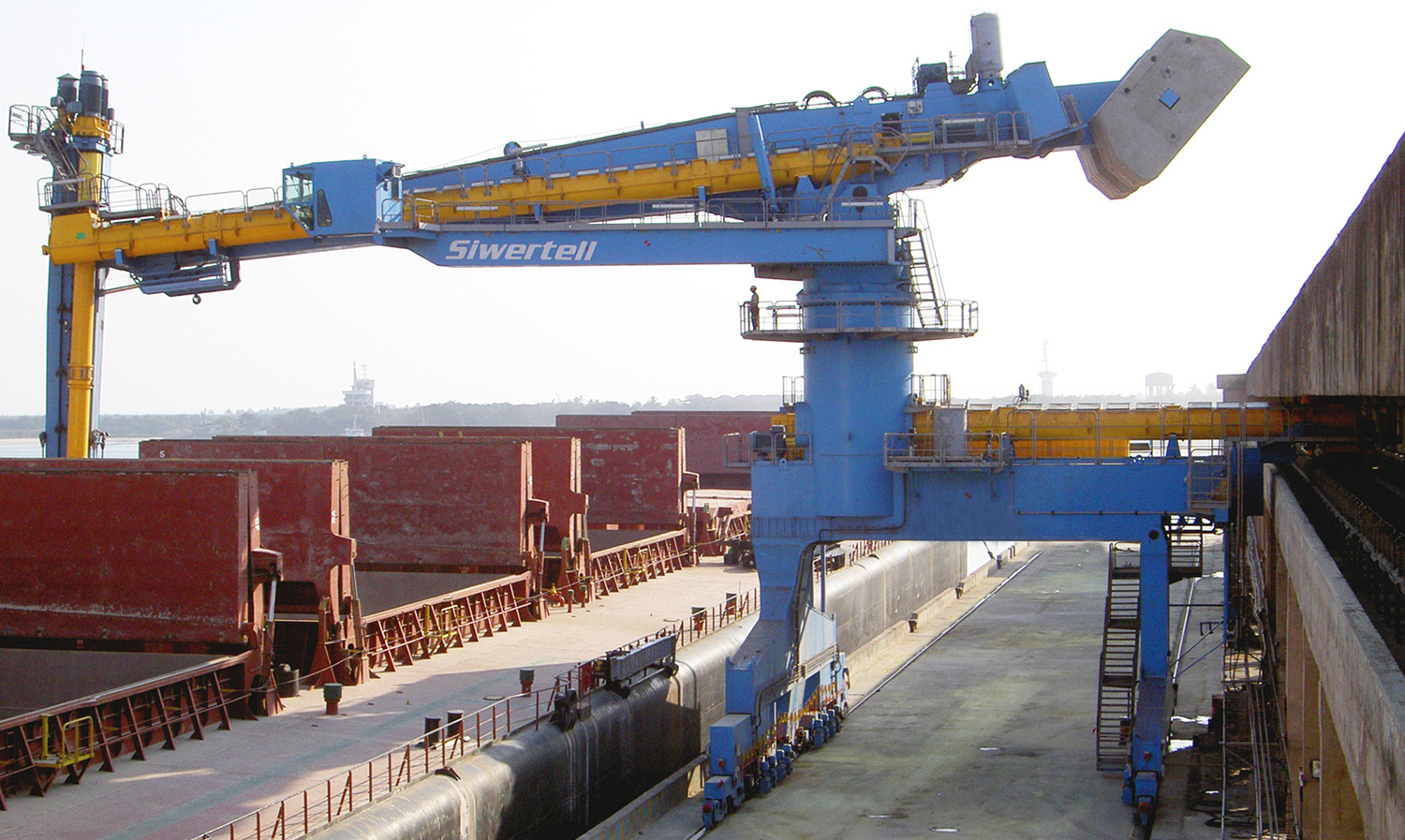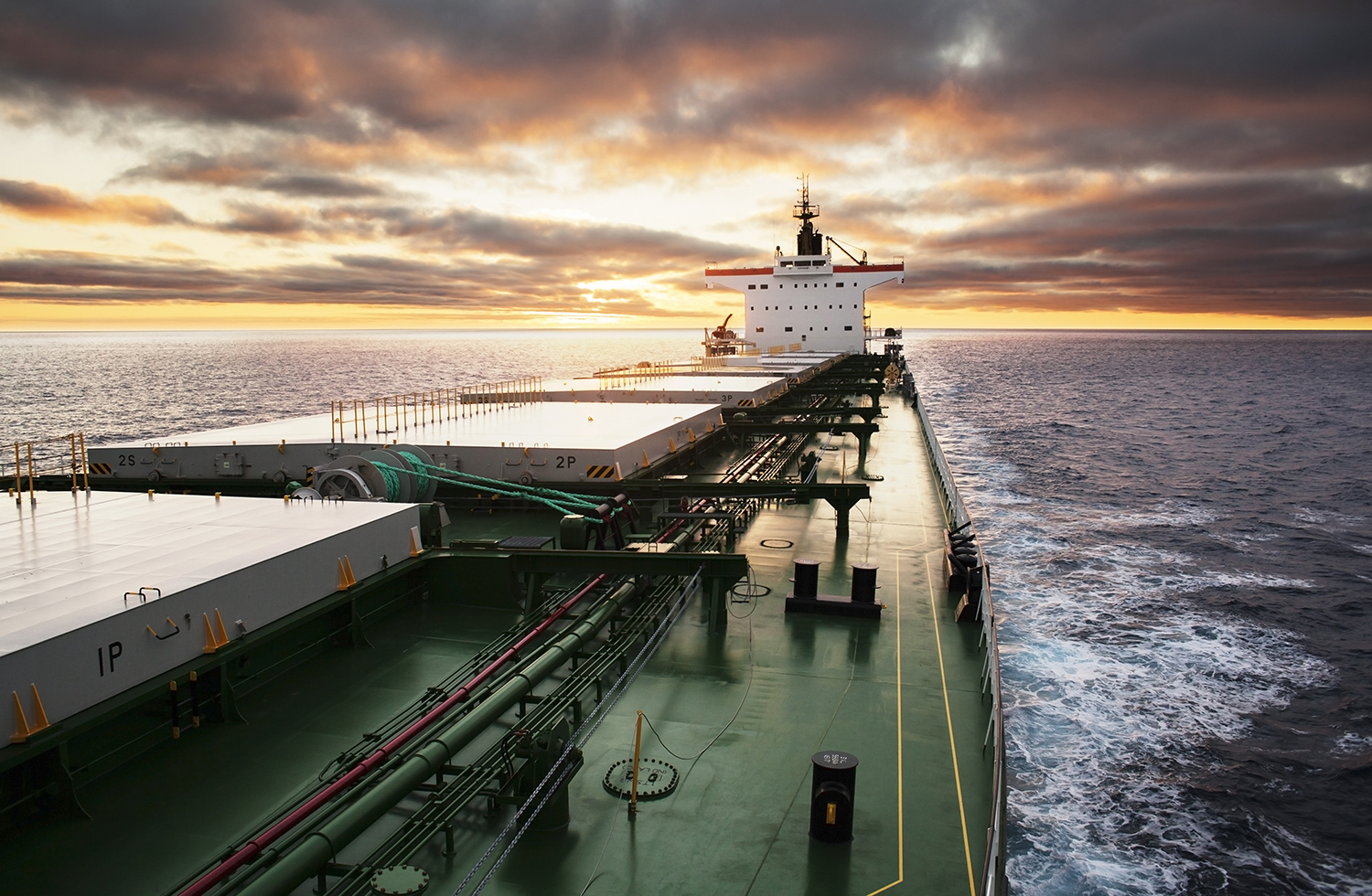
Choose an unloader based on value, not cost
9 Oct 2020It is a false economy to select an unloader without considering operational parameters and performance, through-ship efficiencies, and through-life costs; value-for-money should always be the aim, Per Karlsson, President, Siwertell AB, Bruks Siwertell Group, explains.
We all want value for money, but this is rarely just about the cheapest price. Our equipment lasts for decades, so our aim is to ensure an optimum long-term investment by helping an operator choose a system that best matches its needs.
Many customers, when designing or buying a new unloader, or in fact the whole import terminal, still consider price as the main factor in their decision-making process. Price is important, but if you only look at price, you stop looking at value, and to achieve the best long-term investment we need to look at value. There is a lot to be gained from understanding what a product can ultimately deliver to a business.
Knowledge is key; without accurate information available about different technologies – which might be real game-changers, offering completely new possibilities and directions – operators are condemned to lose money. This is because they miss out on the possibility of developing and lifting operations to more profitable levels, or designing a completely new, optimized terminal from the outset.
Long-term profitability
We have developed a value calculation method that enables us to accurately simulate the impact of different technical solutions on the long-term profitability of an operator’s terminal. The model is based on combining the total cost of investment in relation to the unloader, including factors such as the cost of the jetty, conveying system, and wider operational figures such as demurrage, personnel, energy consumption and material handling waste, for example, spillage.
The cost of a state-of-the-art Siwertell screw-type ship unloader, of which the largest model can offer continuous rated capacities of up to 3,000t/h, is often higher than the cost of a bucket chain, pneumatic unloader, or a grab/mobile harbor crane. However, as soon as you compare its higher capacity and efficiency against the need to purchase two or three of the other types of machine to achieve the same work rate, this is where operational profitability really starts to take a hit. It is also where the value calculation model can be a powerful tool to help demonstrate how an optimum equipment arrangement can generate the best results in terms of capacity, efficiency, and profits.
Calculations are also considered at such an early stage that an operator can access the commercial feasibility of options before any investment commitments are made. This can save costly project changes further down the line.

Different needs, different solutions
For all projects, we work together with our customers to find the right and best combination of equipment. We also have our own design and project management department and are often able to offer reference visits for customers to see a machine or terminal in operation.
Projects tend to be divided into two main categories: the optimization of an existing terminal, and the construction of a completely new one.
In the case of terminal optimizations, like other projects, the value calculation method enables us to accurately simulate the impact of different technology options on the long-term profitability of an existing terminal. The modeling takes into consideration all investment and operating costs, the benefits of different equipment and how best to integrate it into existing infrastructures.

Faster material turnarounds
Projects within existing terminals are typically capped to keep capacity at the same level, because of limitations in downstream conveying systems. However, a clear market trend, in new cement, fertilizer and grain projects in particular, is to build up capacity on the jetty, and within the terminal. This is to maximize the speed at which material can be discharged from a vessel and then transferred to an onward receiving system, minimizing the time the vessel stays at the jetty and any dry bulk material spends in storage. The faster the terminal moves material on from storage, or bypasses it altogether, the quicker its financial turnover.
In these scenarios, the value calculation model proved to be an unbeatable tool, simulating alternative options and effectively showing the impact of different solutions and their combinations. Again, all this happens at such an early stage, when no money has been invested, and all options are still open. It genuinely delivers the power of knowledge, improving the understanding of different choices to enable decisions based on fact not fiction.

Optimized from the outset
For customers building a complete terminal, the value calculation model is an even more critical tool because it can help the customer optimize the entire terminal environment right from the beginning. For these projects, again we consider all factors, because the size of the jetty, material transportation logistics, personnel requirements, and capacity, all have a major impact.
Just taking jetty costs, for example: as higher capacities are needed, dry bulk material handling systems like cranes and continuous unloaders must either get larger or more numerous – in both cases, adding weight or traffic to the jetty. Jetty reinforcements to accommodate heavy bulk handling equipment can easily correspond to fifty percent of the cost of the actual equipment. Therefore, reducing any additional machine weight is advantageous for customers as significant savings can be made in terms of the need for quay reinforcement work – but also, a proportionately higher-throughput machine can be selected for a given strength of quay, delivering impressive returns on investment and securing capacity for any future growth.
Throwing money away
I should also mention a third project group, those operators that run their traditional machinery day-in and day-out, never even realizing that their terminals are quite literally throwing money away, in inefficiencies and wasteful practices so normal as to be regarded as ‘acceptable’.
We have had many cases where we have been able to show the customer how an existing system, based mainly on several low capacity grab cranes, operated by 50 to 100 personnel per day, can be converted to a high-capacity terminal operated by just a few personnel and one high-capacity machine; paying the whole investment back in just a few years. These ‘sleeping’ customers need to be woken up to the amount of money that they are saying goodbye to.
There is an increasing need to upgrade operations that take one to two weeks to unload a vessel with grab or mobile harbor cranes, which have a cargo spillage rate of one to two percent, leading to huge material losses and unacceptable levels of environmental damage. There is technology available, like an enclosed high-capacity screw unloader, which can not only unload the same vessel in two to three days, saving up to USD 20,000 a day in vessel costs, but also saves all the material losses from spillage and keeps the jetty clean and dust-free. Furthermore, the shorter unloading time, the greater the possibility that the terminal has to increase its annual through-put and by that, also increase the profitability of the terminal itself
Millions in savings
We have been able to show that we can easily make USD 2-3 million worth of operational savings per year depending on the annual volumes and existing equipment of the terminal. This is especially relevant to those terminals who have been satisfied, or have accepted existing set-ups and operational cost levels, because they have never had enough factual information to challenge them. Until now, it has been difficult for these existing terminals to develop a plan to improve their profitability, but we can now offer this and show different options with our value calculation model.
An additional feature in the model is that we can offer customers financing with very low interest rates and long pay-back times. With these favorable conditions, we have even been able to show that the investment generates the money to pay back the financing, and also generates a positive cashflow, shortly after the operation’s start-up.

Sustainability built-in
Aside from the financial gains that can be achieved through our technology, we must stress the environmental ones. We have mentioned the costs, both financial and environmental, associated with waste from cargo spillage, but all dry bulk handling equipment should achieve long-term sustainability. It must prevent dust emissions, as well as spillage, and offer the most efficient operations over the course of its service life.
Our totally enclosed Siwertell unloaders are among the most environmentally friendly shore-based bulk handling systems available. Because of their rigorous environmental credentials, they are often installed in environmentally sensitive sites and can be used at the heart of populated areas.
We can demonstrate the sustainability of our solutions; they not only pay for themselves in a few years, but continue to deliver better value and efficiency to the operator over their lifetimes. It makes good business sense to consider all options from the outset.
Any investment starts with needs
Value is influenced by many factors, but it starts with what an operator actually needs. The most important factors that Bruks Siwertell takes into consideration when designing new dry bulk handling equipment for a customer are as follows:
- Sustainability of operations
- Desired through-ship capacity
- Terminal intake volumes
- Typical vessel types and sizes that will need to be accommodated
- Quay height above the waterline, tidal ranges and conditions
- Rail limitations in relation to load
- Existing equipment locations such as rails, conveyor, roads or other machines that share the jetty space
- Type of materials to be handled and if several materials need to be handled by the same machine.
- Properties of materials, for example, ATEX-rated, abrasive, corrosive
The only way to really know what value operators are looking to add to their businesses is to work closely with them. This ensures the best results in terms of meeting performance expectations, and long-term profitability and sustainability.
PLEASE CONTACT US FOR MORE INFORMATION

 Bruks-Siwertell
Bruks-Siwertell